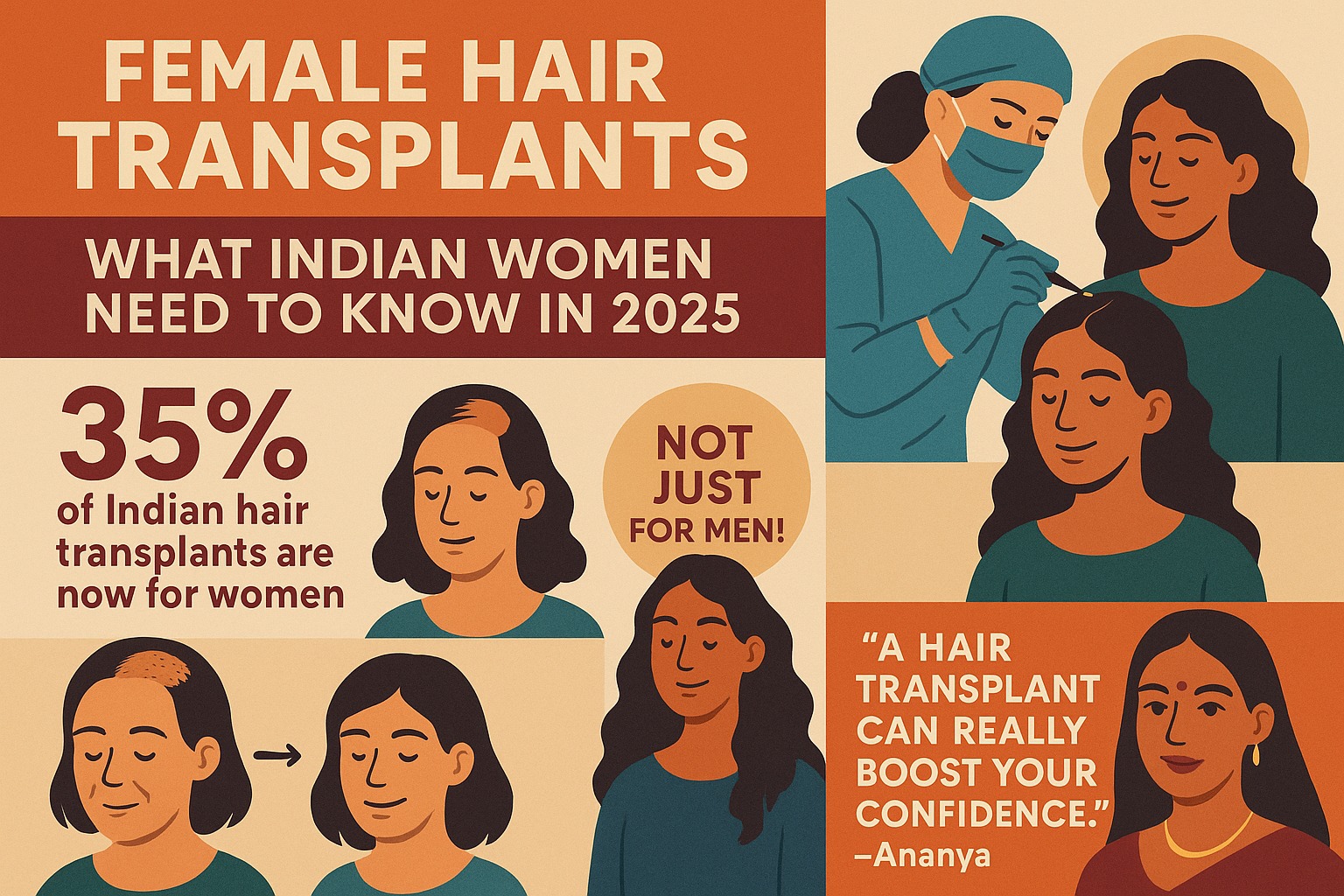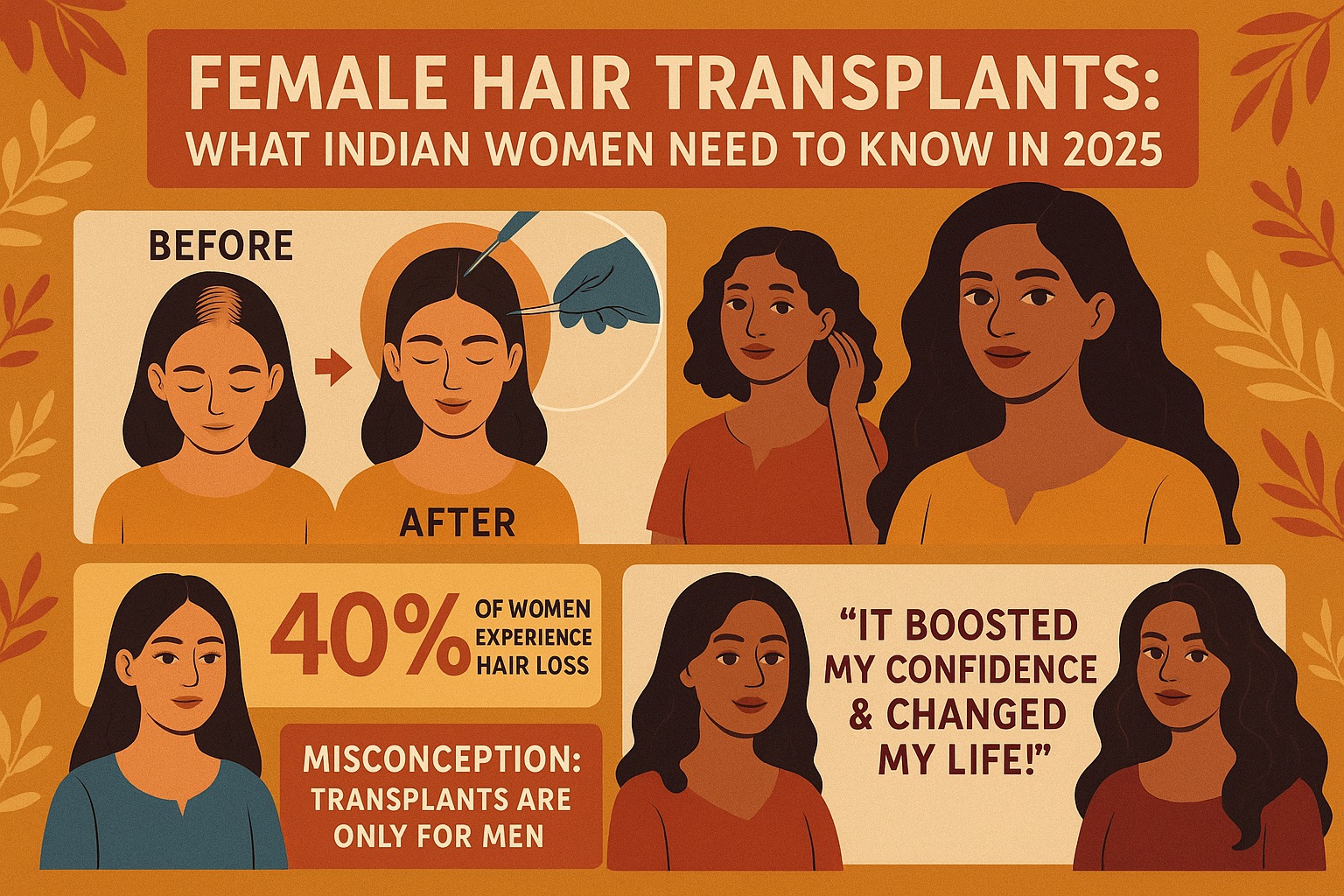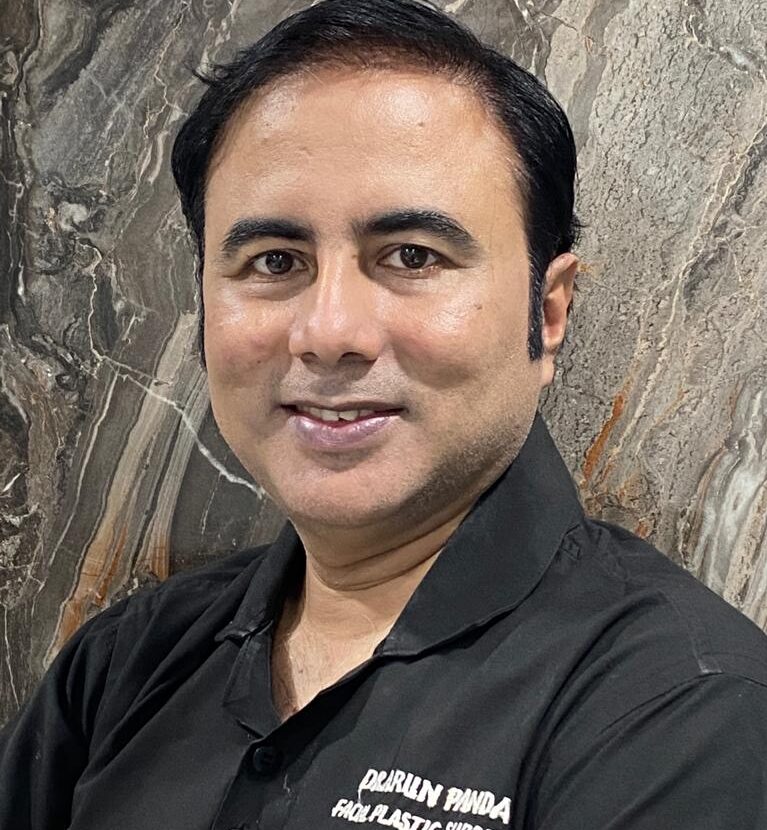Introduction
Hair loss among Indian women is a growing concern, affecting self-esteem and quality of life. Unlike male pattern baldness, female hair thinning often presents unique challenges requiring specialized assessment and treatment. In 2025, advancements in female hair transplantation in Navi Mumbai provide safe, natural, and effective solutions tailored specifically to women’s hair loss patterns and scalp characteristics.

Dr. Arun Panda in Navi Mumbai explains the nuances of female hair transplants, ideal candidates, techniques, complementary therapies, and care tips designed for Indian women’s hair health.
Understanding Female Hair Loss
Women typically experience diffuse thinning rather than localized bald spots, often due to genetics, hormonal fluctuations (post-pregnancy, menopause), nutritional deficiencies, or traction alopecia from hairstyles common in India like tight braids.
Proper diagnosis and understanding of hair loss causes are essential for successful transplantation.
Why Female Hair Transplants Require Specialized Expertise
- Preservation of the hairline naturalness, typically less defined than males
- Dealing with diffuse thinning with preserved donor areas
- Maintaining scalp density and avoiding noticeable scarring
- Considering Indian hair texture and curl pattern for aesthetic outcomes
Dr. Arun Panda uses advanced imaging systems and trichoscopy for precise scalp mapping and individualized surgical design.
Best Techniques for Female Transplants in 2025
- FUE (Follicular Unit Extraction): Least invasive with minimal scarring and predictable results.
- DHI (Direct Hair Implantation): Enables finer control over graft insertion angle, helping preserve natural female hair direction.
- Low-Level Laser Therapy and PRP: Often used adjunctively before or after transplantation to improve hair follicle health and stimulate growth.
Candidates and Expectations
Ideal female transplant candidates:
- Women with stable thinning and a healthy donor area
- Those experiencing traction alopecia or post-partum thinning
- Patients seeking restoration of frontal and crown areas for confidence and volume
Transplants do not cure underlying medical conditions but restore hair density using unaffected donor hair.
Pre- and Post-Transplant Care for Indian Women
- Avoid hairstyles that cause tension/scalp injury prior to surgery
- Quality nutrition and hydration
- Rigorous scalp hygiene post-operation and adherence to medication
- Avoid harsh chemicals or heat styling during healing
Addressing Common Concerns
- Will my hairstyle options be limited? Proper planning ensures hairline naturalness preserving styling versatility.
- Is transplant painful for women? Local anesthesia minimizes discomfort; post-op pain is mild.
- How long before I see results? Initial shedding followed by regrowth around 3–4 months; full results by 12–18 months.
Success Stories: Female Patients in Navi Mumbai
Transformations featuring increased density and natural hairlines build patient confidence. Testimonials highlight personalized care and discreet procedures suitable for Indian cultural contexts.

Why Choose Dr. Arun Panda?
- Specialized experience in female scalp and hair pattern nuances
- Use of latest minimally invasive equipment for comfort and efficiency
- Tailored, holistic treatment integrating medical and surgical hair restoration
Book Your Consultation
Worried about thinning hair? Discover tailored female hair transplants and cutting-edge therapies at Dr. Arun Panda’s clinic in Navi Mumbai.

